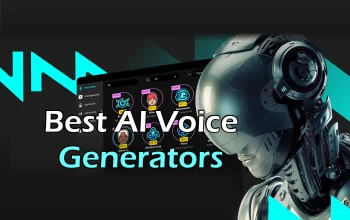
As we advance further into the 21st century, the United States continues to be at the forefront of technological innovation. From artificial intelligence to quantum computing, the landscape of future technology promises to transform industries, improve lives, and shape the global economy. In this article, we’ll explore some of the most exciting and impactful future technologies emerging in the United States.
Table of Contents
1. Artificial Intelligence and Machine Learning
Artificial Intelligence (AI) and Machine Learning (ML) are perhaps the most transformative technologies of our time. These fields have already begun to revolutionize industries such as healthcare, finance, and transportation, and their potential applications are nearly limitless.
In the healthcare sector, AI is being used to enhance diagnostic accuracy, predict patient outcomes, and personalize treatment plans. Companies like IBM with its Watson Health platform and Google’s DeepMind are leading the charge in developing AI systems that can analyze vast amounts of medical data to identify patterns that humans might miss. These advancements could lead to earlier detection of diseases like cancer and more effective treatments, ultimately saving lives.
In finance, AI-driven algorithms are improving risk assessment, fraud detection, and personalized banking services. Startups and established companies alike are leveraging AI to create more secure and efficient financial systems. Moreover, AI is playing a critical role in the development of autonomous vehicles, with companies like Tesla and Waymo pushing the boundaries of what self-driving technology can achieve.
As AI and ML technologies continue to evolve, ethical considerations around their use are becoming increasingly important. The United States is at the forefront of developing policies and frameworks to ensure that AI is used responsibly, with a focus on transparency, fairness, and accountability.
2. Quantum Computing
Quantum computing is another groundbreaking technology with the potential to solve complex problems that are currently beyond the reach of classical computers. Unlike traditional computers, which use bits to process information in binary (0s and 1s), quantum computers use qubits, which can represent both 0 and 1 simultaneously thanks to the principle of superposition. This allows quantum computers to perform multiple calculations at once, making them exponentially more powerful for certain tasks.
The U.S. is home to some of the leading companies and research institutions in the quantum computing space. IBM, Google, and Microsoft are all making significant strides in developing quantum computers. In 2019, Google claimed to have achieved “quantum supremacy” with its Sycamore processor, completing a specific computational task faster than the world’s fastest supercomputers could.
Quantum computing has the potential to revolutionize fields such as cryptography, materials science, and drug discovery. For instance, quantum computers could break current encryption methods, leading to the development of new, more secure cryptographic techniques. They could also simulate molecular interactions at an unprecedented level of detail, speeding up the discovery of new drugs and materials.
Despite the promise of quantum computing, there are significant challenges to overcome, including maintaining qubit stability and scaling up quantum systems. However, the ongoing research and investment in this area suggest that quantum computing will become increasingly important in the coming decades.
3. 5G and Next-Generation Connectivity
The rollout of 5G networks in the United States marks the beginning of a new era in telecommunications. 5G technology promises to deliver faster data speeds, lower latency, and more reliable connections compared to previous generations of mobile networks. This will enable a host of new applications, from enhanced mobile experiences to the Internet of Things (IoT) and smart cities.
One of the most significant impacts of 5G will be on the IoT, where billions of devices—from household appliances to industrial machines—will be connected and communicate with each other in real time. This will lead to more efficient manufacturing processes, smarter energy grids, and improved healthcare monitoring, among other innovations.
5G is also expected to play a crucial role in the development of autonomous vehicles by providing the low-latency communication required for real-time decision-making. Additionally, the enhanced connectivity offered by 5G will support augmented reality (AR) and virtual reality (VR) applications, opening up new possibilities for entertainment, education, and remote work.
However, the deployment of 5G networks is not without its challenges. There are concerns about the infrastructure costs, potential health risks, and the need for robust cybersecurity measures to protect against the increased attack surface that 5G networks could present. Despite these challenges, the U.S. is moving forward with 5G deployment, with major carriers like Verizon, AT&T, and T-Mobile leading the charge.
4. Biotechnology and Genetic Engineering
Biotechnology and genetic engineering are poised to revolutionize healthcare, agriculture, and environmental management in the United States. Advances in gene editing technologies, particularly CRISPR-Cas9, have opened up new possibilities for treating genetic disorders, improving crop yields, and even combating climate change.
In the medical field, CRISPR is being explored as a potential cure for a range of genetic diseases, including sickle cell anemia, cystic fibrosis, and certain types of cancer. By precisely editing the DNA of living organisms, scientists can correct mutations at their source, offering the possibility of permanent cures rather than just treating symptoms.
In agriculture, genetic engineering is being used to create crops that are more resistant to pests, diseases, and environmental stressors. This could lead to higher yields and more sustainable farming practices, helping to feed a growing global population. Additionally, biotechnology is being used to develop lab-grown meat, which could reduce the environmental impact of livestock farming and address ethical concerns related to animal welfare.
Environmental applications of biotechnology include using genetically modified organisms to clean up pollutants and sequester carbon dioxide from the atmosphere. These innovations could play a crucial role in addressing the challenges of climate change and environmental degradation.
As with AI, the ethical implications of biotechnology and genetic engineering are significant. The U.S. is actively engaged in debates around the regulation of these technologies, balancing the potential benefits with the need to protect human rights, environmental health, and biodiversity.
5. Renewable Energy and Sustainable Technologies
The transition to renewable energy and sustainable technologies is critical for addressing climate change and ensuring a sustainable future. The United States is investing heavily in renewable energy sources such as solar, wind, and hydropower, as well as in technologies that improve energy efficiency and reduce carbon emissions.
Solar and wind power have seen dramatic cost reductions in recent years, making them increasingly competitive with fossil fuels. The U.S. is home to some of the largest solar and wind farms in the world, and states like California and Texas are leading the way in renewable energy adoption. Advances in energy storage technology, particularly batteries, are also crucial for managing the intermittent nature of renewable energy sources and ensuring a reliable power supply.
In addition to renewable energy, the U.S. is also exploring innovations in sustainable transportation, such as electric vehicles (EVs) and hydrogen fuel cells. Companies like Tesla, Rivian, and Nikola are pushing the boundaries of EV technology, while research into hydrogen fuel cells could provide an alternative for long-haul transportation and heavy industry.
Sustainable building technologies, such as energy-efficient materials, smart grids, and green architecture, are also gaining traction. These innovations aim to reduce the environmental impact of buildings, which are a major source of greenhouse gas emissions.
The transition to renewable energy and sustainable technologies is not just about reducing emissions; it also presents economic opportunities. The renewable energy sector is creating jobs and driving economic growth, making it a key component of the U.S. economy in the 21st century.
Conclusion
The future of technology in the United States is incredibly promising, with innovations in AI, quantum computing, 5G, biotechnology, and renewable energy poised to transform society. These technologies will not only drive economic growth but also address some of the most pressing challenges of our time, from healthcare and climate change to security and sustainability.
As these technologies continue to develop, the U.S. will need to navigate the associated ethical, regulatory, and societal challenges. By fostering innovation while ensuring responsible use, the United States can maintain its leadership in the global technology landscape and build a future that benefits all.


